徹底搞懂Java多線程(四)
實現(xiàn)1000個線程的時間格式化
package SimpleDateFormat;import java.text.SimpleDateFormat;import java.util.Date;import java.util.concurrent.LinkedBlockingDeque;import java.util.concurrent.ThreadPoolExecutor;import java.util.concurrent.TimeUnit;/** * user:ypc; * date:2021-06-13; * time: 17:30; */public class SimpleDateFormat1 { private static SimpleDateFormat simpleDateFormat = new SimpleDateFormat('mm:ss'); public static void main(String[] args) {ThreadPoolExecutor threadPoolExecutor = new ThreadPoolExecutor(10,10,100,TimeUnit.MILLISECONDS,new LinkedBlockingDeque<>(1000),new ThreadPoolExecutor.DiscardPolicy());for (int i = 0; i < 1001; i++) { int finalI = i; threadPoolExecutor.submit(new Runnable() {@Overridepublic void run() { Date date = new Date(finalI * 1000); myFormatTime(date);} });}threadPoolExecutor.shutdown(); } private static void myFormatTime(Date date){System.out.println(simpleDateFormat.format(date)); }}
產生了線程不安全的問題👇:
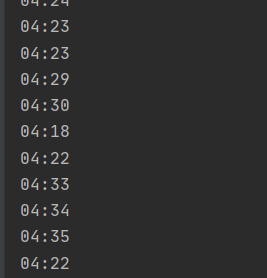
這是因為:
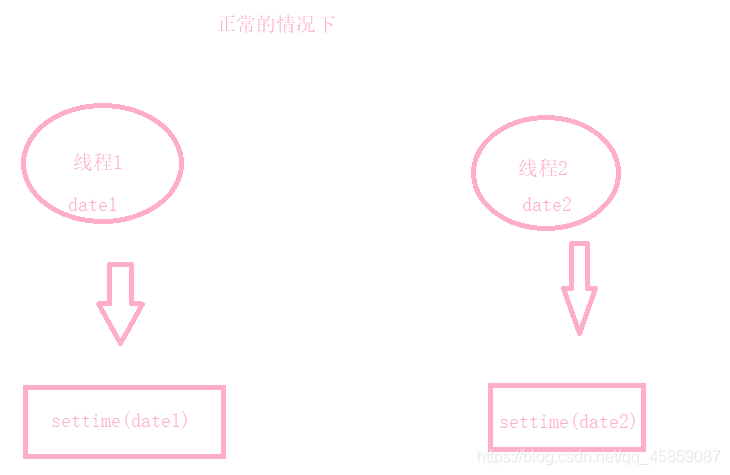
多線程的情況下:
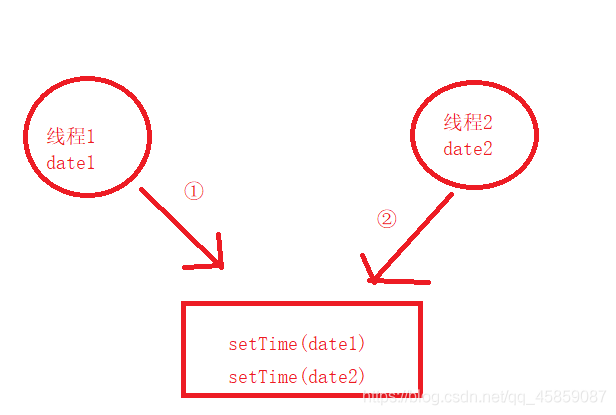
線程1在時間片用完之后,線程2來setTime()那么線程1的得到了線程2的時間。
所以可以使用加鎖的操作:

就不會有重復的時間了

但是雖然可以解決線程不安全的問題,但是排隊等待鎖,性能就會變得低
所以可以使用局部變量:

也解決了線程不安全的問題:
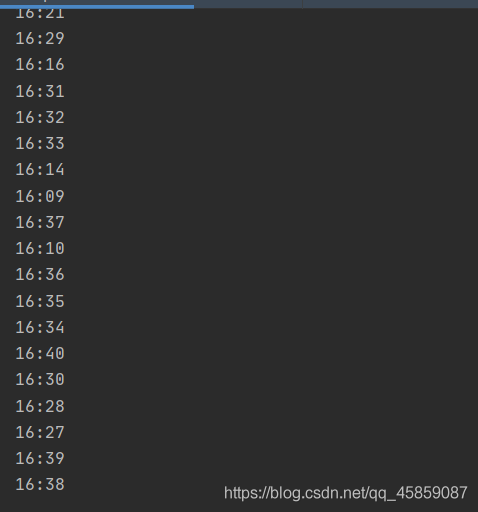
但是每次也都會創(chuàng)建新的私有變量
那么有沒有一種方案既可以避免加鎖排隊執(zhí)行,又不會每次創(chuàng)建任務的時候不會創(chuàng)建私有的變量呢?
那就是ThreadLocal👇:
ThreadLocalThreadLocal的作用就是讓每一個線程都擁有自己的變量。
那么選擇鎖還是ThreadLocal?
看創(chuàng)建實列對象的復用率,如果復用率比較高的話,就使用ThreadLocal。
ThreadLocal的原理類ThreadLocal的主要作用就是將數(shù)據放到當前對象的Map中,這個Map時thread類的實列變量。類ThreadLocal自己不管理、不存儲任何的數(shù)據,它只是數(shù)據和Map之間的橋梁。
執(zhí)行的流程:數(shù)據—>ThreadLocal—>currentThread()—>Map。
執(zhí)行后每個Map存有自己的數(shù)據,Map中的key中存儲的就是ThreadLocal對象,value就是存儲的值。每個Thread的Map值只對當前的線程可見,其它的線程不可以訪問當前線程對象中Map的值。當前的線程被銷毀,Map也隨之被銷毀,Map中的數(shù)據如果沒有被引用、沒有被使用,則隨時GC回收。
ThreadLocal常用方法
set(T):將內容存儲到ThreadLocal
get():從線程去私有的變量
remove():從線程中移除私有變量
package ThreadLocalDemo;import java.text.SimpleDateFormat;/** * user:ypc; * date:2021-06-13; * time: 18:37; */public class ThreadLocalDemo1 { private static ThreadLocal<SimpleDateFormat> threadLocal = new ThreadLocal<>(); public static void main(String[] args) {//設置私有變量threadLocal.set(new SimpleDateFormat('mm:ss'));//得到ThreadLocalSimpleDateFormat simpleDateFormat = threadLocal.get();//移除threadLocal.remove(); }}ThreadLocal的初始化
ThreadLocal提供了兩種初始化的方法
initialValue()和
initialValue()初始化:
package ThreadLocalDemo;import java.text.SimpleDateFormat;import java.util.Date;/** * user:ypc; * date:2021-06-13; * time: 19:07; */public class ThreadLocalDemo2 { //創(chuàng)建并初始化ThreadLocal private static ThreadLocal<SimpleDateFormat> threadLocal = new ThreadLocal() {@Overrideprotected SimpleDateFormat initialValue() { System.out.println(Thread.currentThread().getName() + '執(zhí)行了自己的threadLocal中的初始化方法initialValue()'); return new SimpleDateFormat('mm:ss');} }; public static void main(String[] args) {Thread thread1 = new Thread(() -> { Date date = new Date(5000); System.out.println('thread0格式化時間之后得結果時:' + threadLocal.get().format(date));});thread1.setName('thread0');thread1.start();Thread thread2 = new Thread(() -> { Date date = new Date(6000); System.out.println('thread1格式化時間之后得結果時:' + threadLocal.get().format(date));});thread2.setName('thread1');thread2.start(); }}
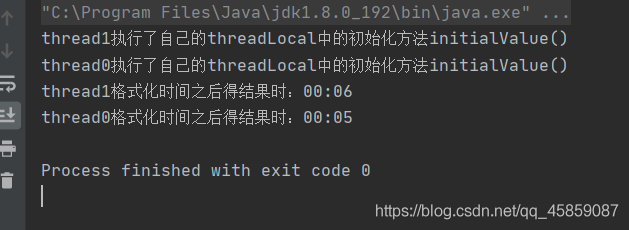
withInitial方法初始化:
package ThreadLocalDemo;import java.util.function.Supplier;/** * user:ypc; * date:2021-06-14; * time: 17:23; */public class ThreadLocalDemo3 { private static ThreadLocal<String> stringThreadLocal = ThreadLocal.withInitial(new Supplier<String>() {@Overridepublic String get() { System.out.println('執(zhí)行了withInitial()方法'); return '我是' + Thread.currentThread().getName() + '的ThreadLocal';} }); public static void main(String[] args) {Thread thread1 = new Thread(() -> { System.out.println(stringThreadLocal.get());});thread1.start();Thread thread2 = new Thread(new Runnable() { @Override public void run() {System.out.println(stringThreadLocal.get()); }});thread2.start(); }}
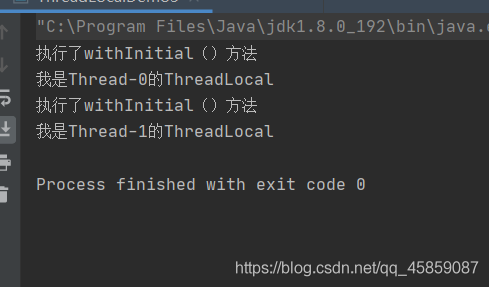
注意:
ThreadLocal如果使用了set()方法的話,那么它的初始化方法就不會起作用了。
來看:👇
package ThreadLocalDemo;/** * user:ypc; * date:2021-06-14; * time: 18:43; */class Tools { public static ThreadLocal t1 = new ThreadLocal();}class ThreadA extends Thread { @Override public void run() {for (int i = 0; i < 10; i++) { System.out.println('在ThreadA中取值:' + Tools.t1.get()); try {Thread.sleep(100); } catch (InterruptedException e) {e.printStackTrace(); }} }}public class ThreadLocalDemo4 { public static void main(String[] args) throws InterruptedException {//main是ThreadA 的 父線程 讓main線程set,ThreadA,是get不到的if (Tools.t1.get() == null) { Tools.t1.set('main父線程的set');}System.out.println('main get 到了: ' + Tools.t1.get());Thread.sleep(1000);ThreadA a = new ThreadA();a.start(); }}
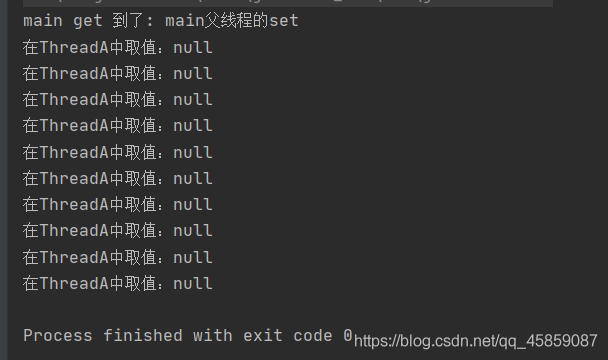
類ThreadLocal不能實現(xiàn)值的繼承,那么就可以使用InheritableThreadLocal了👇
InheritableThreadLocal的使用使用InheritableThreadLocal可以使子線程繼承父線程的值

在來看運行的結果:
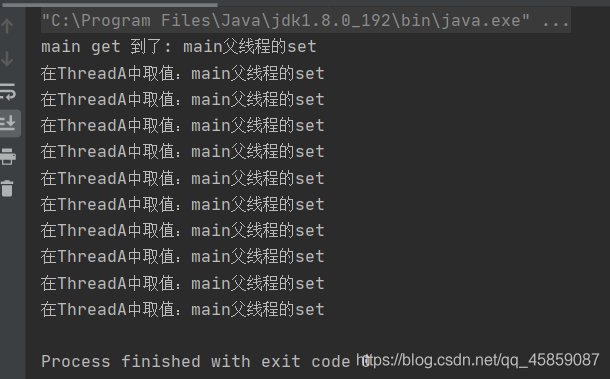
子線程有最新的值,父線程依舊是舊的值
package ThreadLocalDemo;/** * user:ypc; * date:2021-06-14; * time: 19:07; */class ThreadB extends Thread{ @Override public void run() {for (int i = 0; i < 10; i++) { System.out.println('在ThreadB中取值:' + Tools.t1.get()); if (i == 5){Tools.t1.set('我是ThreadB中新set()'); } try {Thread.sleep(100); } catch (InterruptedException e) {e.printStackTrace(); }} }}public class ThreadLocalDemo5 { public static void main(String[] args) throws InterruptedException {if (Tools.t1.get() == null) { Tools.t1.set('main父線程的set');}System.out.println('main get 到了: ' + Tools.t1.get());Thread.sleep(1000);ThreadA a = new ThreadA();a.start();Thread.sleep(5000);for (int i = 0; i < 10; i++) { System.out.println('main的get是:' + Tools.t1.get()); Thread.sleep(100);} }}
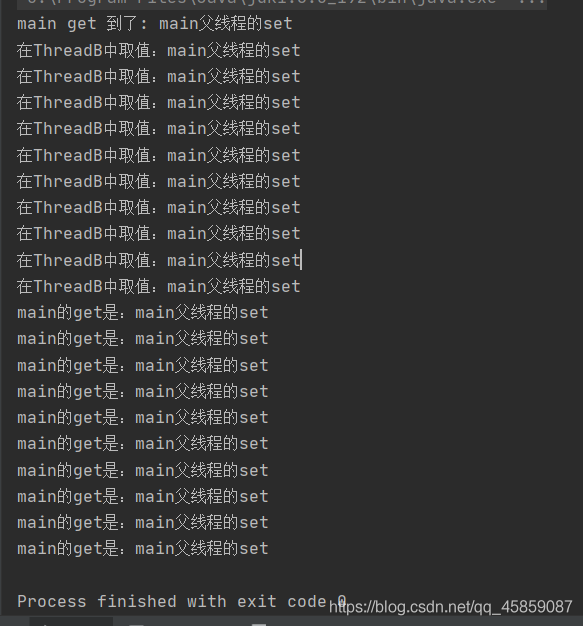
ThreadLocal的臟讀問題來看👇
package ThreadLocalDemo;import java.util.concurrent.LinkedBlockingDeque;import java.util.concurrent.ThreadPoolExecutor;import java.util.concurrent.TimeUnit;/** * user:ypc; * date:2021-06-14; * time: 19:49; */public class ThreadLocalDemo6 { private static ThreadLocal<String> threadLocal = new ThreadLocal<>(); private static class MyThread extends Thread {private static boolean flag = false;@Overridepublic void run() { String name = this.getName(); if (!flag) {threadLocal.set(name);System.out.println(name + '設置了' + name);flag = true; } System.out.println(name + '得到了' + threadLocal.get());} } public static void main(String[] args) {ThreadPoolExecutor threadPoolExecutor = new ThreadPoolExecutor(1, 1, 0,TimeUnit.MILLISECONDS, new LinkedBlockingDeque<>(10));for (int i = 0; i < 2; i++) { threadPoolExecutor.execute(new MyThread());}threadPoolExecutor.shutdown(); }}
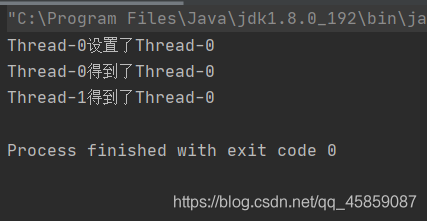
發(fā)生了臟讀:
線程池復用了線程,也復用了這個線程相關的靜態(tài)屬性,就導致了臟讀
那么如何避免臟讀呢?
去掉static 之后:

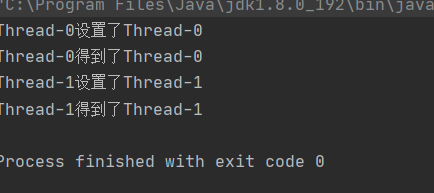
本篇文章就到這里了,希望對你有些幫助,也希望你可以多多關注好吧啦網的更多內容!
相關文章:
1. java實現(xiàn)圖形化界面計算器2. IDEA的Mybatis Generator駝峰配置問題3. IIS Express 取代 ASP.NET Development Server的配置方法4. Spring-Richclient 0.1.0 發(fā)布5. IntelliJ Idea2017如何修改緩存文件的路徑6. 解決idea中yml文件不識別的問題7. javascript設計模式 ? 建造者模式原理與應用實例分析8. 一篇文章帶你了解JavaScript-對象9. IntelliJ IDEA設置條件斷點的方法步驟10. Python使用oslo.vmware管理ESXI虛擬機的示例參考
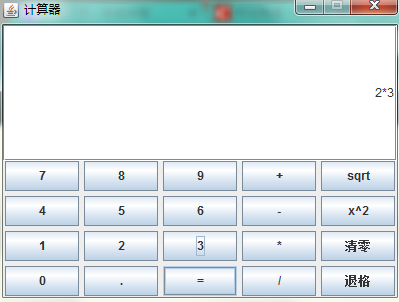
 網公網安備
網公網安備